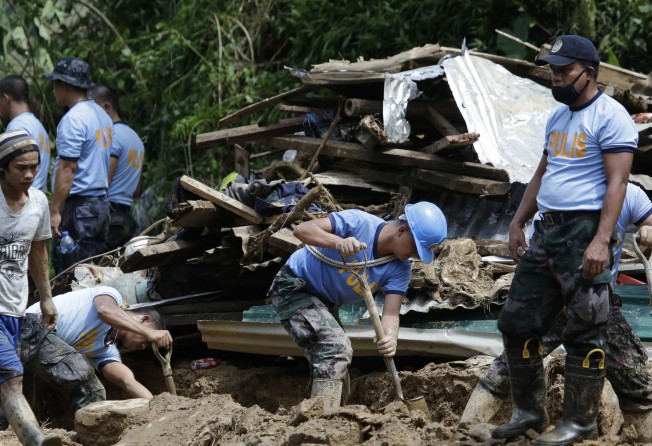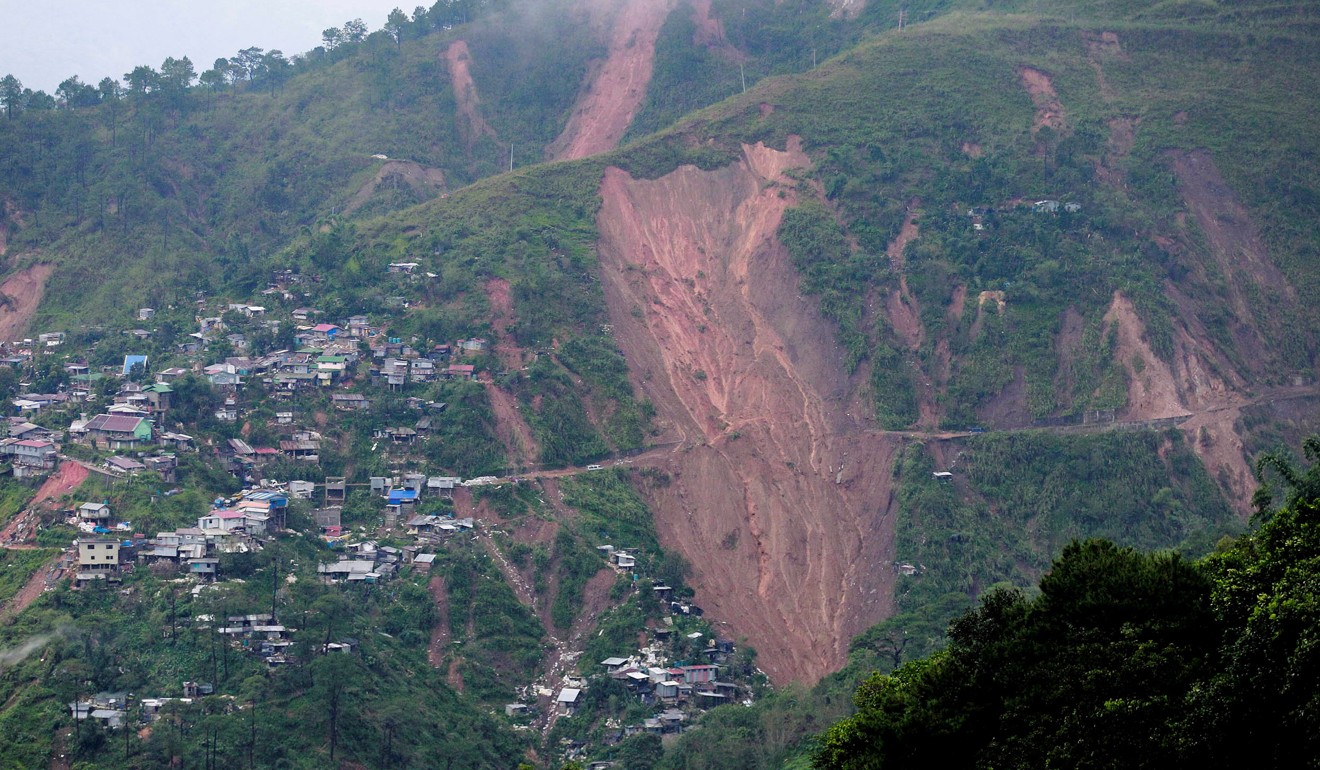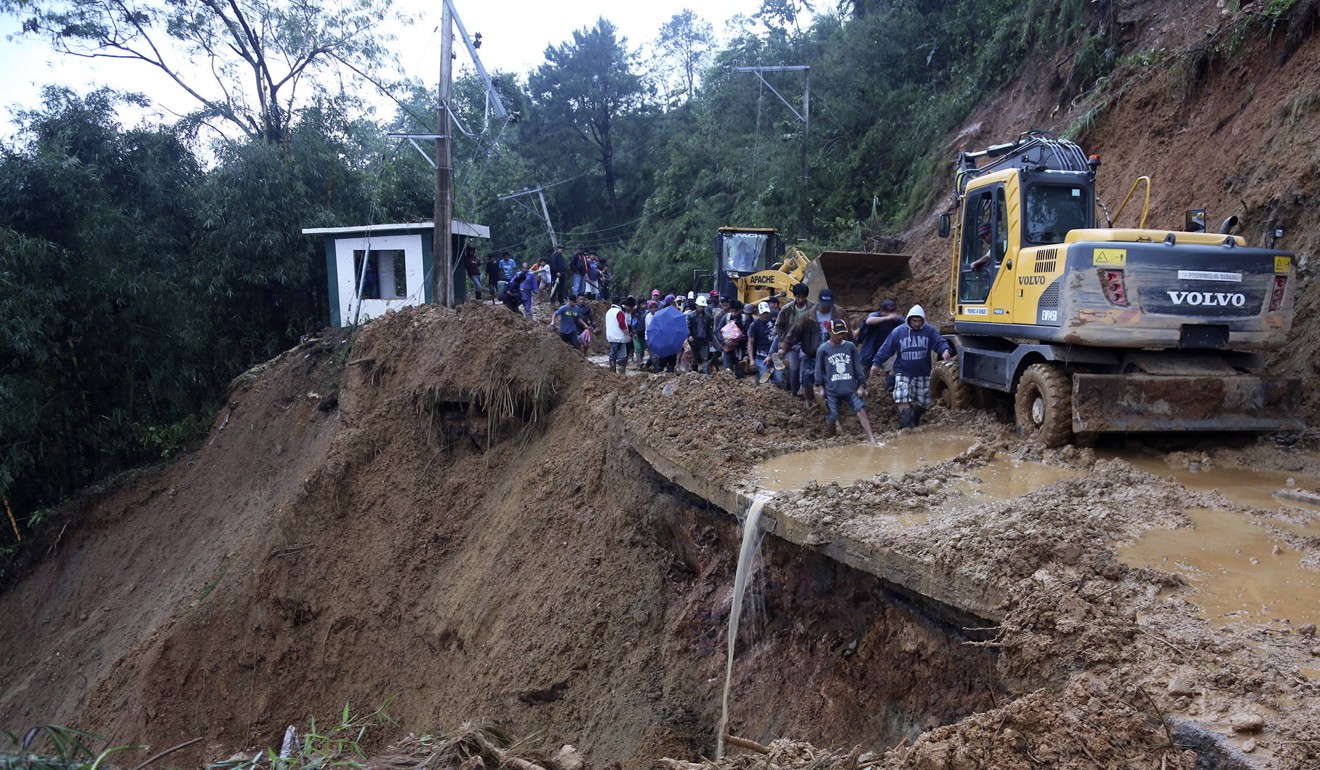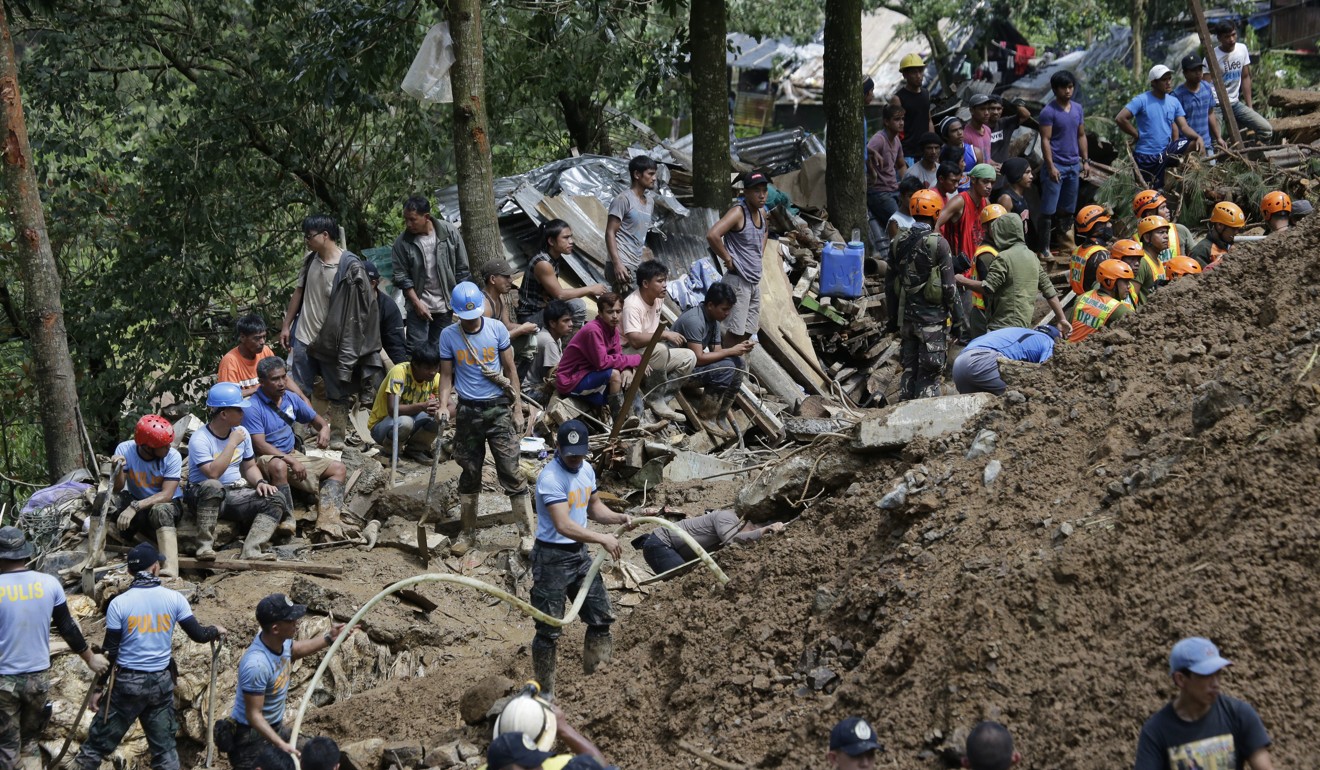Typhoon Mangkhut: dozens feared dead in Philippines after landslide at mining camp
Disaster prompted President Rodrigo Duterte to repeat his threat to shut down mines across the country

Philippine rescuers used shovels and their bare hands to claw through mounds of rocky soil on Monday as they desperately looked for dozens of people feared buried beneath a landslide unleashed by Typhoon Mangkhut. Authorities said the confirmed death toll from the storm was 66, but it was expect to go higher.
Searchers have already pulled 11 bodies from the vast debris field in Itogon, in the disaster-hit nation’s north. Up to 40 may still be buried, with little hope they have survived.
“We believe that those people there, maybe 99 per cent, are already dead,” Itogon Mayor Victorio Palangdan told reporters. “It will continue until they (searchers) surrender. There are relatives among the rescuers who are still hoping they will be able to find their kin alive.”
A massive hillside, weakened by the monster storm’s lashing rains, collapsed on the miners’ bunkhouse about 500 metres (546 yards) below.

Angered by the deaths from landslides that some government officials say are exacerbated by illegal mining, President Rodrigo Duterte on Monday reiterated his desire to close the country’s mines.
“If I were to try to do my thing I will close all mining in the Philippines,” Duterte said during a televised meeting of the government’s disaster response team.
Mangkhut, the world’s most powerful storm this year, pounded the Philippines at the weekend with torrential rains and violent winds that snapped pylons and sheared roofs off homes.

Authorities say dozens died in the storm, mostly buried in landslides in the mountainous regions in the north of Luzon, the Philippines’ largest island.
Hundreds of rescuers in rows formed a human chain to pass rocks, debris and tree trunks out of the search area in Itogon.
The massive landslide left a gaping gash in the otherwise green hillside that was studded with small homes topped with rusting metals roofs.
With damaged roads preventing the entry of heavy equipment, soldiers, police and miners also used shovels and channelled water from a nearby stream to loosen the earth.
It was excruciatingly slow work, as anguished relatives watched and waited for word on their missing loved ones.
Residents of the remote town, in the Cordillera range about 200km (125 miles) north of Manila, had sought refuge in the building to avoid the wrath of Mangkhut.

The two-storey structure was an old bunkhouse abandoned by a gold mining firm at an area that has since been settled by small-time miners, Palangdan said.
Recovered bodies were draped in fabric and lined up in a row at a makeshift tent on a nearby road above the bunkhouse.
On Monday, Environment and Natural Resources Secretary Roy Cimatu ordered that all small-scale mining in the Cordillera region be stopped.

Landslides and flooding elsewhere in the Philippines forced nearly 200,000 people to flee their homes, according to a police tally.
On Sunday, Duterte and government officials flew to the heavily-affected area of Cagayan. He said in a televised briefing: “I share the grief of those who lost their loved ones. Those [are what] we call the unforeseen events. In insurance, this is an act of God. I don’t know how it can be an act of God, but that is the term used by the insurance.”

Weeks of heavy monsoon downpours had already left hillsides unstable in the region.
Crescencio Bacalso, the governor of Benguet, a province that includes Itogon, also cited a tragic case in Baguio, the region’s largest city, where small-scale miners were helping to find a woman whose house had been buried.
“Unfortunately, there was a second collapse and the responders themselves became victims of a landslide. Six of them managed to crawl out but two others are missing,” he added.
“It rained for a month here in Benguet just before (Mangkhut) arrived, so the ground was soggy, leading to erosion and landslides,” Bacalso said.
Agence France-Presse, Kyodo, Reuters, The Guardian